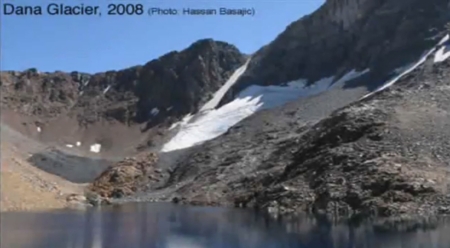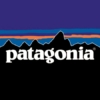Another Climate Change Victim: Yosemite’s Glaciers
Glacial retreat is becoming an increasingly common–and unsettling–fact of mountain life in the 21st Century. Many were made more familiar with the topic through the dramatic photos of Glacier National Park displayed in Al Gore’s An Inconvenient Truth. News from California this week reveals the problem is present in our Sierra backyard as well. Gretchen Weber, of California’s KQED Public Radio shares the following story with us. Many thanks to Gretchen for tuning us in to what’s no doubt a concerned audience:
The glaciers in the Sierra Nevada are melting fast, and I really wanted to see one before it was too late. Earlier this fall, I got my wish. Reporter Sasha Khokha and I were lucky enough to travel to Yosemite and tag along with geographer Hassan Basagic on his trek to photograph the Dana Glacier as part of his research documenting the retreat of the Sierra glaciers.
The hike to Dana Glacier was stunning. We parked the car just outside Yosemite’s Tioga Pass Gate, which is at close to 10,000 feet in elevation, and began bushwhacking almost immediately. We climbed to the base of the glacier traveling through soft green meadows, up and over mountains of multi-colored boulders, and along the edges of electric blue and green alpine lakes. Not one cloud passed over our heads all day long.
While the climb was memorable for its beauty, what made the day truly outstanding was having a guide explaining the landscape around us each step of the way. Since 2003, Basagic has been tracking the changes in the glaciers of the Sierra using historic photographs. His research contains comparison photographs of several other Sierra glaciers, including the Lyell and Maclure glaciers.
Californians are thinking more than ever about water, snow pack, and our glaciers due in part to a couple of dry years and two pretty severe fire seasons. In October, Tom Knudson of the Sacramento Bee wrote an interesting piece about his trek to the Lyell Glacier with a team of scientists. Knudson and team found that like Dana, the Lyell Glacier has shrunk dramatically since 1883.
While the hike to Dana was spectacular, the glacier itself appeared less than majestic. It looked vulnerable, clinging to the side of a massive bowl, a remnant of the sea of ice that once filled the entire valley. It looked so small and fragile that I was not surprised when Yosemite geologist Greg Stock told us in an interview the next day that it’s likely the Dana Glacier will be gone in the next 25-50 years.
Gretchen’s original story can be seen here, and a complete multimedia gallery of her trip is also available, and worth a look.
Those who’ve traveled frequently within the heart of the Sierra over the past 10 or so may find some truth in Basagic’s findings. Increasingly, climbers of the range’s legendary alpine routes remark on the surprising “early start” of climbing seasons on some of the remote peaks. These early starts are due in large part to snows that never accumulate, or quickly melt in the increasingly warm summers. A close reading of some the early route descriptions authored by climbers like Muir, Clyde, and Eichorn also reveals snow-related details that no longer match reality, for example permanent snowfields that are now conspicuously absent
Ed note: Another good resource is Clarence King’s classic Mountaineering in the Sierra Nevada
Have a listen to the original KQED radio report, and get a closer look at Hassan Basagic’s research, including his telling photograph series. And to learn more about KQED’s Climate Watch series, visit them at:

